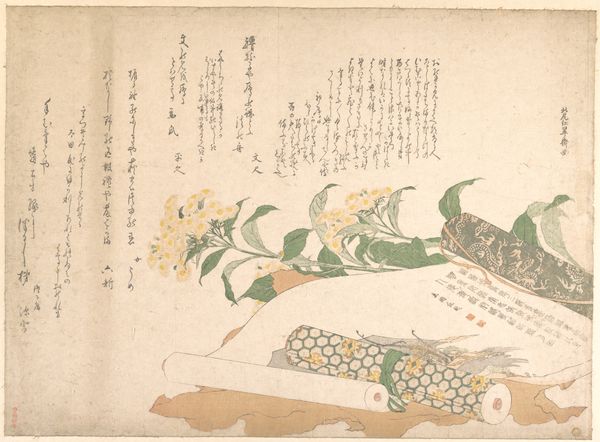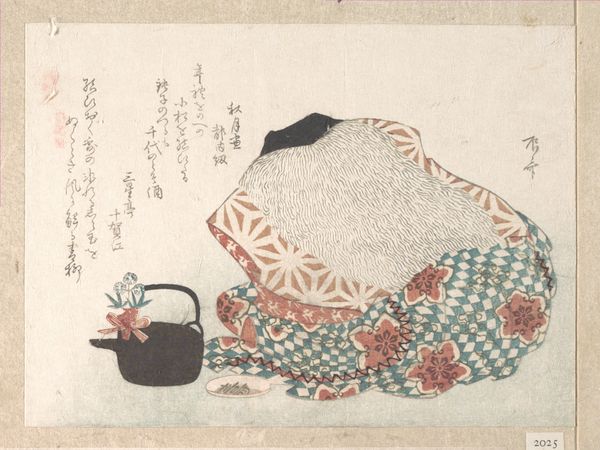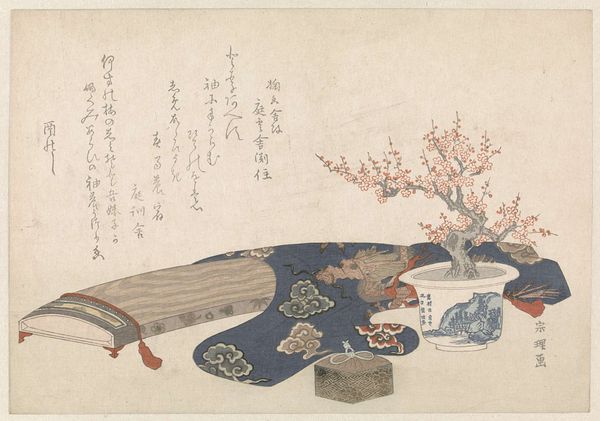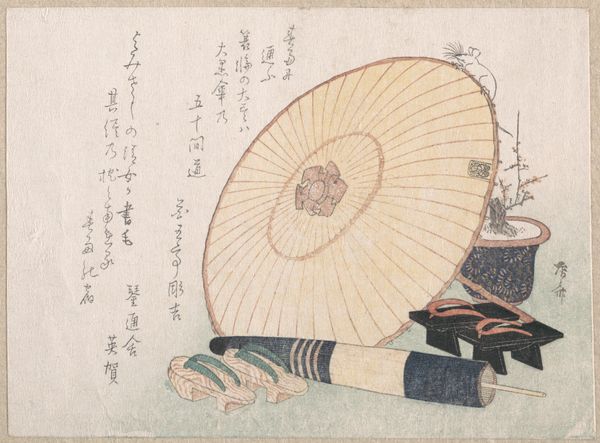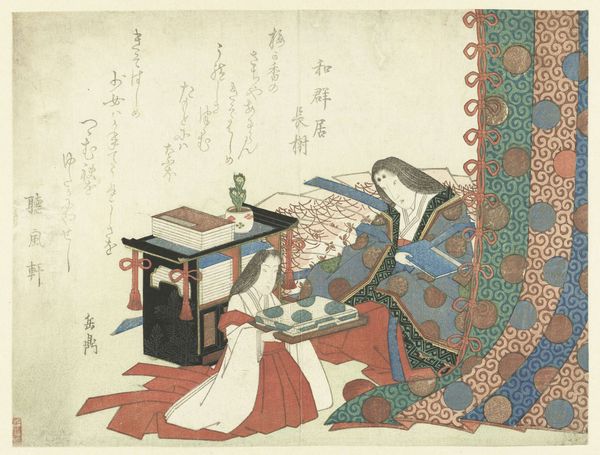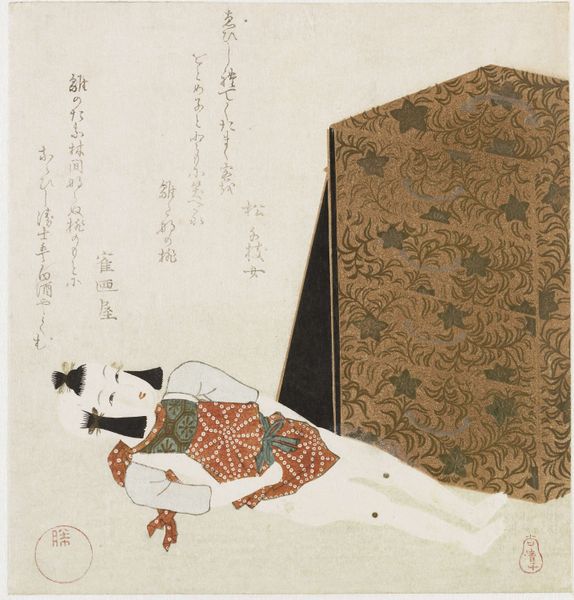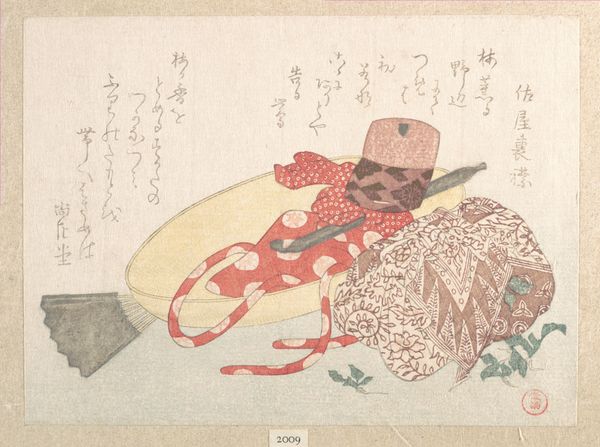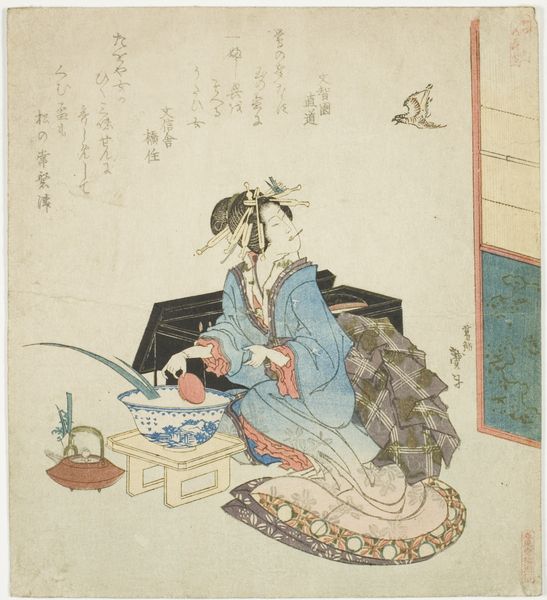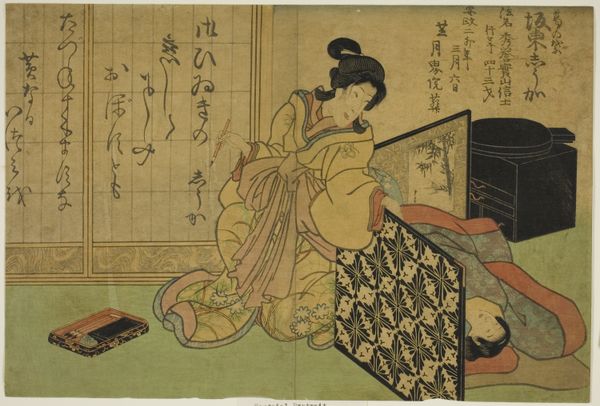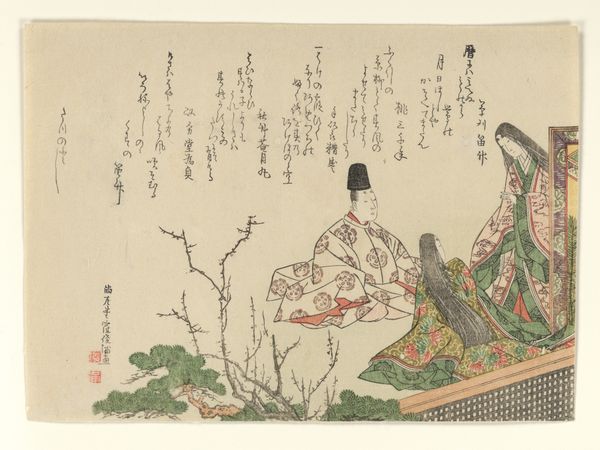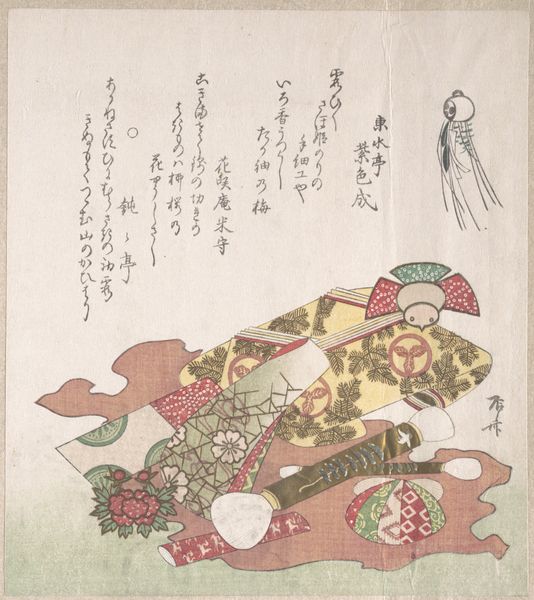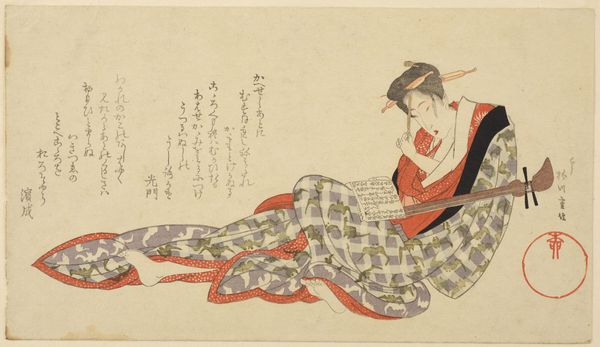
Red Table with Fans and a Brush Stand 19th century
0:00
0:00
print, watercolor
#
table
# print
#
asian-art
#
ukiyo-e
#
watercolor
#
coloured pencil
Dimensions: 5 9/16 x 7 7/16 in. (14.1 x 18.9 cm)
Copyright: Public Domain
Editor: Here we have Ryūryūkyo Shinsai's "Red Table with Fans and a Brush Stand," a 19th-century print currently residing at The Met. It’s a rather intimate scene. What do you see in this piece, beyond the obvious? Curator: Beyond the immediate visual, I see a carefully constructed presentation of culture and identity. Consider the context of ukiyo-e, “pictures of the floating world.” This wasn't merely about capturing pretty images; it was about reflecting and shaping the values of a rising merchant class in Edo-period Japan. Editor: So, you're saying there's more to it than just pretty fans and a table? Curator: Precisely. Think about who possessed these items. Fans, calligraphy tools… These were signifiers of education, leisure, and status. The deliberate arrangement suggests a constructed identity, an aspirational self-portrait. We should ask, who is being represented here, and what is the artist trying to say about them? What social message does the piece convey? Editor: That's interesting! I hadn't considered it as a deliberate statement. The peacock feathers, especially… Curator: Yes! They become charged symbols of sophistication, luxury, perhaps even a hint of subversion within a rigid social hierarchy. It begs the question: What norms are being reinforced, and what boundaries are being pushed? Editor: I see it now. It's not just a still life; it's a statement about class and maybe even rebellion. Thanks! Curator: Absolutely. Art is rarely just aesthetic; it’s deeply embedded in the social and political fabric of its time. Paying attention to who it included or excluded can teach us a lot about social struggles.
Comments
No comments
Be the first to comment and join the conversation on the ultimate creative platform.
